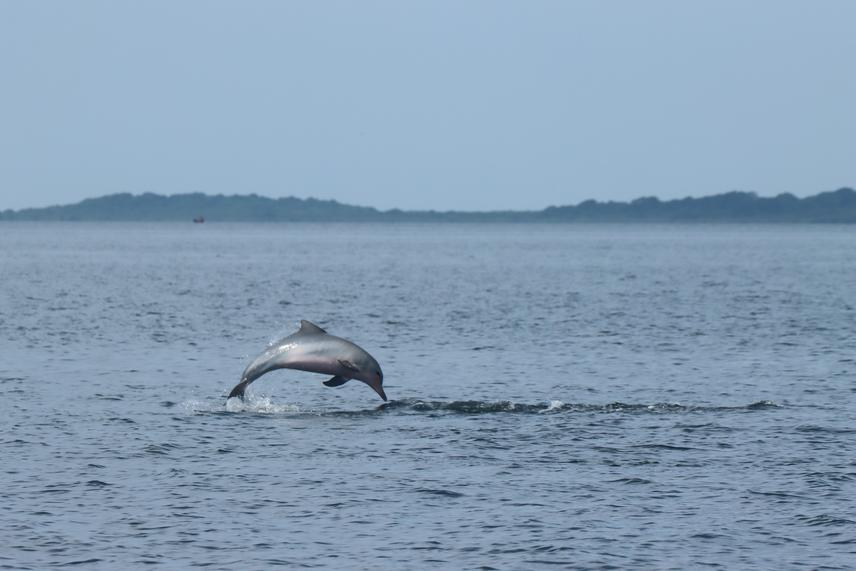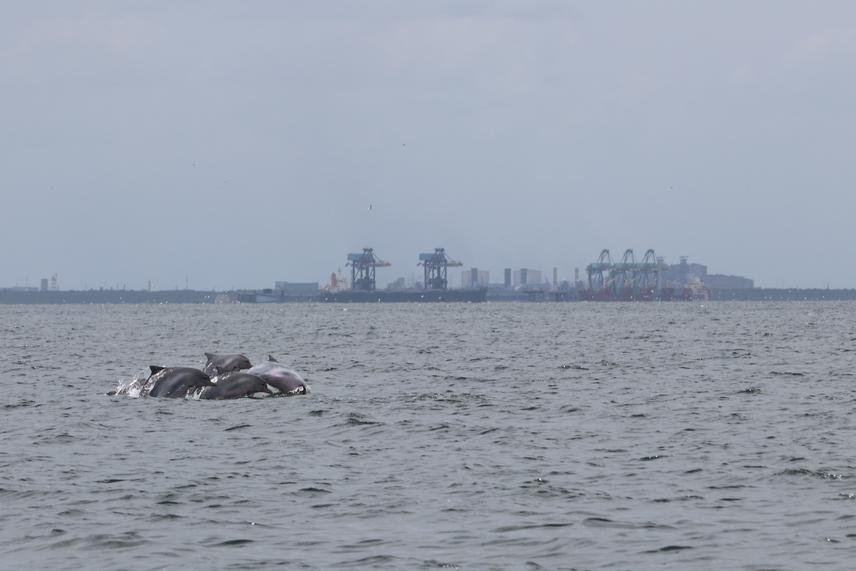Guilherme Maricato
Other projects
22 Mar 2021
Dolphins of the Green Coast: Evaluating the Effectiveness of Marine Protected Areas Towards an Endangered Cetacean in South-Eastern Brazil
Urgent measures are needed to safeguard the Guiana dolphins (Sotalia guianensis) living in Sepetiba Bay (SB) and Ilha Grande Bay (IGB) in southeastern Brazil. These dolphins face severe threats from human activities such as industrial operations, port activities, tourism, and pollution. Current Marine Protected Areas (MPAs) fall short of protecting their foraging and acoustic environments, underscoring the need to reassess MPA effectiveness.

An individual Guiana dolphin performing a tail-out jump in Sepetiba Bay. ©Tom Cezimbra/ECoMAR-UFRJ.
Our project aims to conduct an ecological risk assessment (ERA) to document the cumulative impacts of human-induced rapid environmental changes (HIREC) on these dolphins, along with other species like the franciscana (Pontoporia blainvillei). By using non-invasive methods such as photo-identification and passive acoustic monitoring, we will estimate dolphin population size, survival, and movement patterns while evaluating the effects of noise pollution. This will help pinpoint the most critical times and locations for dolphin conservation efforts. Engaging local stakeholders is a key part of our strategy. By collaborating with MPA managers, environmental agencies, and fishing community leaders, we aim to incorporate their insights into our risk assessment and develop inclusive conservation strategies. This approach will help reduce conflicts between human activities and marine biodiversity, leading to more effective management practices.

Boat activities can lead to strikes. ©Guilherme Maricato/ECoMAR-UFRJ.
Guiana dolphins play a crucial role in marine ecosystems as top predators and indicators of environmental health. They act as sentinels of environmental change, providing valuable insights into ecosystem health and contributing to global conservation efforts. Then, protecting these animals supports broader biodiversity goals and aligns with international initiatives like the United Nations Decade of Ocean Science for Sustainable Development. Our project will map high-risk areas and propose special protection zones to balance economic development with ecological sustainability. By providing actionable recommendations for local stakeholders, we aim to enhance the resilience of marine ecosystems in the SB-IGB estuarine complex. Through this comprehensive approach, we seek to ensure the long-term survival and health of Guiana dolphin populations and their habitats. Protecting these dolphins preserves a vital part of marine biodiversity and promotes a healthier and more sustainable environment for all.

Port complexes often result in increasing water pollution. ©Guilherme Maricato/ECoMAR-UFRJ.
Header: Cumulative impacts contribute to the worsening of body condition, where emaciated individuals exhibit prominent ribs © Tom Cezimbra/ECoMAR-UFRJ.